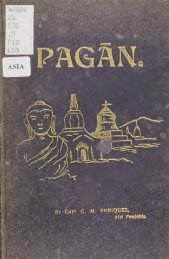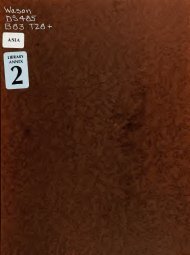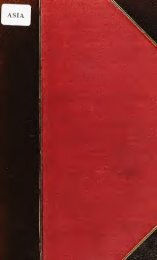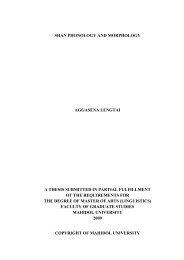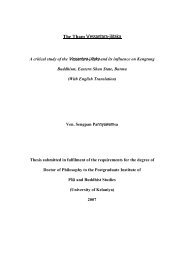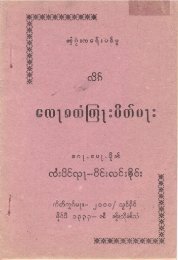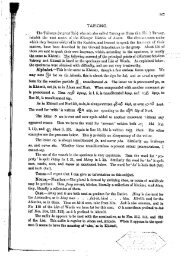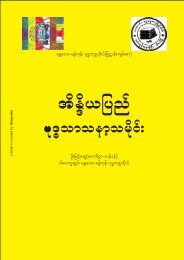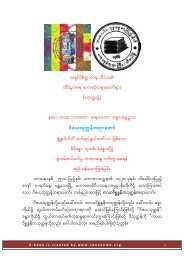The Tai Ahom National Council Memo Scheduling
The Tai Ahom National Council Memo Scheduling
The Tai Ahom National Council Memo Scheduling
Create successful ePaper yourself
Turn your PDF publications into a flip-book with our unique Google optimized e-Paper software.
In recognition to their claim, the Government nominated an <strong>Ahom</strong> to the Assam Legislative<br />
<strong>Council</strong> in 1912. <strong>The</strong> appointment letter issued to Padmanath Gohain Barua reads thus: “You<br />
have been appointed a member of Assam Legislative <strong>Council</strong> representing the <strong>Ahom</strong><br />
community”. Thus the <strong>Ahom</strong>s were recognized as a minority community in 1912. He<br />
represented the <strong>Ahom</strong> in the Assam Legislative <strong>Council</strong> till 1916.<strong>The</strong> claims of the <strong>Ahom</strong> were<br />
also recognized in the appointments to the public services, in the award of educational<br />
scholarship and in the nomination to the local bodies, etc.<br />
In 1918, on behalf of the <strong>Ahom</strong> community, Padmanath Gohain Baruah as the President of<br />
the <strong>Ahom</strong> Sabha, gave a deposition before Lord Southborough, the Chairman of the<br />
Franchise Committee when it came to Calcutta and submitted a 12-page memorandum. He<br />
justified before the Committee for separate franchise of the <strong>Ahom</strong> community.<br />
“Under the Act of 1919, while the <strong>Ahom</strong>s voted on the non-Mohammedan roll, provision<br />
remained for their further representation through nomination, in the Provincial<br />
Legislative <strong>Council</strong>. Besides, it was the declared policy of the Government to give the<br />
<strong>Ahom</strong> a share in Government service by reserving definite percentages of total number of<br />
appointments in services administered by the Provincial and District authorities. It may<br />
be noted that till then members of the Scheduled Castes, the Tribal Communities and<br />
Indian Christians as such had no sort of communal representation in the Assam<br />
Legislative <strong>Council</strong>.” (<strong>Memo</strong>randum of the <strong>Ahom</strong> <strong>Tai</strong> Mongoliya Rajya Parishad<br />
submitted to the Hon’ble Prime Minister and the Home Minister of India, April, 1968,<br />
p.38).<br />
Recommendation for <strong>Ahom</strong> quota in the Provincial Legislature:<br />
Before the passing of the Government of India Act, 1935 when enquiries were made for<br />
details of the constitutional structure, the Government of Assam in its memorandum to the<br />
Statutory Commission proposed that a certain quota of seats in the Legislature of the<br />
Province should be allocated to the <strong>Ahom</strong>s. (Vide Recommendations of the Government<br />
Assam to the Simon Commission, pp. 49 and 54 as given in the above <strong>Memo</strong>randum of the<br />
<strong>Ahom</strong> <strong>Tai</strong> Mongoliya Rajya Parishad, p.38). But in the First Round Table Conference, which<br />
was attended by a non-<strong>Ahom</strong> representative, only a feeble voice in its support was raised, and<br />
“as a result the community was excluded from the list of those for whom separate representation<br />
was specially provided under the Communal Award” (Ibid, p. 38).




